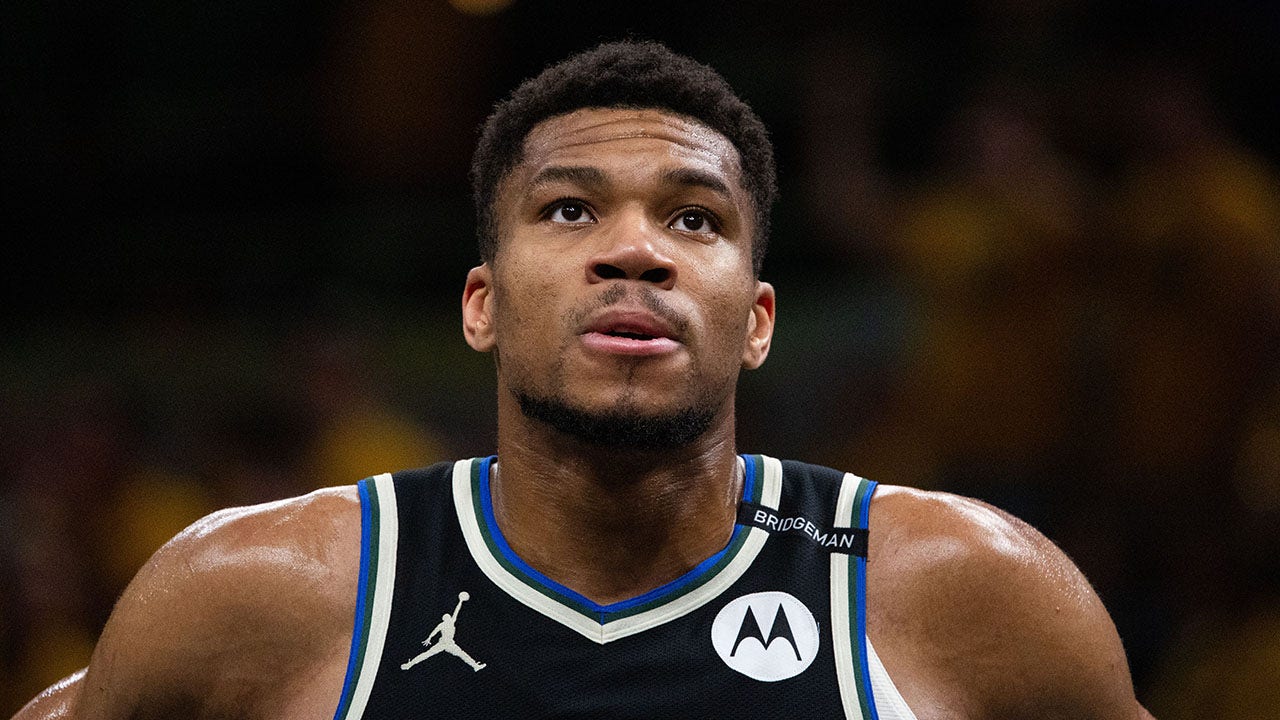Work. Compete. Nothing promised and nothing given.
That’s the message Cleveland Browns general manager Andrew Berry delivered to rookie Shedeur Sanders and the rest of a very crowded quarterback room — which is set to take its first stride forward on Friday. That’s when two components of that Browns depth chart will hit the field for the first time in a full blown practice, with rookie minicamp getting under way at the team’s practice complex in Berea, Ohio. With an eyebrow-raising NFL Draft now in the rear view mirror, Cleveland will get its first head-to-head look at Dillion Gabriel and Sanders, who were chosen in the third and fifth rounds of last month’s selection process.
Advertisement
Slotted alongside 40-year old veteran Joe Flacco and soon-to-be 27-year-old journeyman Kenny Pickett, Cleveland’s quartet represents one of the most intriguing and wide-open quarterback battles in the NFL heading into July training camp. It’s a competition that has no clear favorite at this point, and maybe not even an obvious pecking order on the depth chart. But what it does have is four stylistically similar players all vying for the attention of a front office and coaching staff that badly needs one of the younger competitors to emerge as a realistic long-term resolution at the position.
Here’s how the four players vying for the Browns' starting job break down in the coming months, followed by the other three NFL quarterback competitions taking shape.
Cleveland Browns
Dillon Gabriel
For all the talk about Shedeur Sanders being the quarterback with the chip on his shoulder after sliding to the fifth round of the draft, there’s an argument to be made that nobody should be more motivated than Gabriel at this point. Despite being chosen a full 50 picks and two rounds ahead of Sanders, Gabriel heads into his rookie minicamp somewhat shrouded by the considerable media shadow cast by Sanders. This despite Gabriel wrapping his career as a first team All-American and winning three of the biggest awards inside the Big Ten, including MVP, Offensive Player of the Year and Quarterback of the Year.
Advertisement
But that impressive résumé was weighed down by a multitude of knocks, including Gabriel’s average arm strength, less-than-ideal 5-foot-11 height, a college career that saw him play six seasons for three different teams, and also being a left-handed passer. That pigeonholed Gabriel from an evaluator standpoint, stamping him as a player who needed a specific offensive scheme and head coaching fit. Luckily for him, Browns coach Kevin Stefanski is seen as that kind of fit. Ideally for the Browns, he will showcase the ability to learn quickly and play the kind of clean football that saw him throw for a whopping 155 touchdowns against only 32 interceptions over six college seasons. Not to mention 64 games that make him the most experienced quarterback in college football history.
Shedeur Sanders
While surely motivated to prove that his draft fall wasn’t about talent, Sanders will still have to endure a microscope that is vastly out of whack for his fifth-round status. In essence, the pressure to perform as a high pick has been replaced with the pressure to show who was actually right: the Sanders family, which believed he was a first-round NFL talent, or the rest of the NFL, which most clearly did not embrace the same assessment of his talent. And on top of all that, he walks into a quarterback room that features another rookie at the position who was taken 50 picks and two rounds ahead of him — which should at least be suggestive of what the Browns think about the chasm between the two players.
The NFL has four quarterback battles about to start. (Henry Russell/Yahoo Sports)
Realistically, the Browns will be asking the same of Sanders as they are of Gabriel: to work hard, compete and pick up the offensive scheme as fast as possible, while limiting mistakes and accepting whatever coaching is necessary to refine them into a potential starter. Aside from that, show leadership qualities that mesh with the team’s locker room and overall culture. That’s the foundation where the Browns are beginning. And if one or the other doesn’t separate himself while navigating through those expectations, the difference may eventually come down to the opportunities they get in preseason games and joint practices — with hard results in live situations being a great divider.
Advertisement
But make no mistake, the draft slotting alone is suggestive Sanders already has an uphill battle to climb. Historically, most fifth-round picks don’t hang on long in the NFL, let alone become high-level starters. Even fewer manage to fight their way to Week 1 starting position as rookies. Some will point out that Dak Prescott did it for the Dallas Cowboys in 2016, but leave out the fact that it took significant injuries to both Tony Romo and Kellen Moore to get Prescott that shot.
Joe Flacco
Even at 40 years old, Flacco is still the likeliest candidate to open training camp as the starter for the Browns. He knows Stefanski and has already operated the scheme at a high level. He also still has the best arm on the depth chart, albeit paired with the worst overall athleticism. The bottom line is that the position still requires an experienced option. With Deshaun Watson likely to be shut down for the season and pushed out the door next offseason, Flacco is the one guy that can be a bridge quarterback for an extended period. But long term, his limitations are his limitations. While he plays from the pocket and showcase accuracy and zip, turnovers eventually become a liability. That’s unlikely to change, which is what makes him the starter until someone else on the depth chart takes the crown away — or Flacco throws it away.
Kenny Pickett
Pickett is the oddly fascinating player in the room, now on his third team since being selected in the first round of the 2022 NFL Draft. After flaming out with the Pittsburgh Steelers, he recast himself as a capable and reliable backup with the Philadelphia Eagles, which is the role the Browns had in mind when they traded for him in March. To put it plainly, he was supposed to be the backup with some potential upside, slotting in behind what I believe was initially planned to be Kirk Cousins — until the Atlanta Falcons blew that plan up.
Advertisement
In some respects, Pickett is in the same boat as Gabriel and Sanders, with respect to picking up the offense as quickly as possible and limiting mistakes. But unlike Gabriel and Sanders, there’s no real “ceiling” projection here. The rookies have potential upside to be unlocked by coaching, but Pickett is what he is from a developmental standpoint. However, that doesn’t mean he can’t win the bridge starting job by the start of the season, making Flacco expendable by the end of training camp. For now, that door is open. But it requires Pickett showing he is both marginally better than Flacco and exponentially better than Gabriel or Sanders. Because if the assessment is close between Pickett and one of the rookies, the franchise is going to lean into taking a shot on one of the draft picks sooner than later.
From the wide angle, this is what makes Friday’s rookie minicamp so important for the Browns. It gives Cleveland its first opportunity to understand how if one of the rookie quarterbacks — or both — can hit the ground running in full squad minicamp in June and then make things competitive with the veterans when training camp begins in July. Simply put, if a path to the starting job is truly attainable for either Gabriel or Sanders, the first step toward it begins on Friday in Berea.
Now on to the other three quarterback competitions that will shape up over the summer and into the fall.
Indianapolis Colts
Daniel Jones vs. Anthony Richardson (It’s stacked)
This face-off reminds me of 2019, when the Miami Dolphins traded Ryan Tannehill to the Tennessee Titans and virtually everyone inside the organization believed it was setting up the make-or-break turning point in the starting career of 2015 No. 2 overall pick Marcus Mariota. At the time, it was billed as adding some competition to the Titans’ quarterback room, with a veteran player who had experienced solid but ultimately fleeting success in his previous stop as a starting quarterback. This should sound very familiar in Indianapolis right now, with Daniel Jones being added in March on a one-year “prove it” deal to the Colts' roster, to either take the job from Anthony Richardson or spur the soon-to-be 23-year-old into finding a gear he hasn’t been able to reach.
Advertisement
Frankly, the deck feels a little stacked in Jones’ favor at the starting line, after signing his one-year deal for $14 million (including more than $13 million guaranteed at signing) — which is high above the going rate for even the best backup quarterbacks. If anything, it feels like Jones is being brought in with the belief he’ll ultimately take the starting job, either in training camp or quickly in relief if Richardson wins the job and falters in the regular season. With the addition of Tyler Warren as an every-down tight end, there is more than enough talent at the skill positions to run an above-average offense, with much of the load capable of being carried by running back Jonathan Taylor and wideouts Michael Pittman Jr. and Josh Downs.
Right now, we can say that Jones has shown in the past that he can run a capable offense when everyone around him is healthy and he’s protected in the pocket. Richardson, on the other hand, has never shown that ability consistently. Most especially in 2024, when he was expected to take a step forward and responded with a heartburn-inducing 12 interceptions and nine fumbles in only 11 games. Not to mention a 47.7 completion percentage that actually got worse from four games in 2023 to eleven games in 2024. And all of that wincing data doesn’t even take into account the very ugly moment when Richardson checked himself out of a game last season when he was simply "tired."
The bottom line? The writing is on the wall for Richardson and it’s in bold letters. He’s going to be painted by the organization as the guy who has the starting quarterback job to lose, when it’s very much likely that he’s the guy who needs to come in and win the position in training camp.
New Orleans Saints
Derek Carr vs. Tyler Shough (It’s clear)
At the rate things are going, this might not even be a competition, given the extremely sour taste in the mouths of some inside the Saints organization over what has transpired with Derek Carr this offseason.
Advertisement
The quick timeline? After suffering a season-ending wrist injury against the New York Giants in Week 14, Carr shut himself down and didn’t participate in any significant throwing sessions until this spring. During those sessions, he felt discomfort in this throwing shoulder that he believed was linked to that same Week 14 loss to the Giants. Following medical consultation, Carr’s camp believed that surgery could be a necessary path and that the 2025 season was suddenly in jeopardy. Much to the chagrin of the Saints, that information was leaked to NFL Network and later, other organizations. Complicating the relationship between Carr and the team even further, the Saints unilaterally restructured his contract earlier in the offseason, making it virtually impossible to move on from him prior to the 2025 season.
There’s a lot going on with the Saints and Carr. But the simplest way to unravel all of it is to focus the back and forth through the prism of the Saints drafting Louisville’s Tyler Shough, who was selected with the 40th overall pick and turns 26 in September. The capital used on Shough and the simple data point of his age — not to mention a solid swath of evaluator opinions suggesting he’s ready to start games as a rookie — should lead everyone to an obvious conclusion. And it's this: Carr is on his way out of the fold, one way or another, and the front office and new coaching staff is preparing to turn the franchise over to Shough sooner than later.
That’s not to say that Carr can’t decline surgery and then come in and impact the landscape enough to keep himself in the starting seat. He certainly can. But the path beyond 2025 for him appears to be sealed off. And unless Shough gets an opportunity and experiences a total meltdown, that’s not likely to change.
New York Giants
Russell Wilson vs. Jaxson Dart (It’s complicated)
The Giants are throwing everything they have at trying to put this face-off on ice before it even develops. Both head coach Brian Daboll and general manager Joe Schoen have stressed Dart taking a backseat and developing and being patient as he learns how NFL defenses — and NFL offenses — operate. If there is an open microphone nearby for the next few months, chances are Daboll and Schoen are speaking into it about taking the slow and steady approach with Dart. This is what you do when you take a quarterback in the 20s in the first round of the NFL Draft.
Advertisement
It’s dicey territory when it comes to success for a quarterback. There’s a solid reasoning behind it. Consider this run of NFL QBs selected from picks 20-32 over the last decade:
2022: Pittsburgh Steelers’ Kenny Pickett. Traded in 2024
2020: Green Bay Packers’ Jordan Love. Benched behind Aaron Rodgers for three seasons
2018: Baltimore Ravens’ Lamar Jackson. Took over starting spot from Joe Flacco as a rookie
2016: Denver Broncos’ Paxton Lynch. Rostered by three NFL teams in his first four years. Started four games, washed out of the NFL after the 2019 season
2014: Cleveland Browns’ Johnny Manziel. Started 8 games, washed out of the NFL after the 2015 season
That’s a fairly bleak collection, unless you factor in Love’s three-year incubatory period. How I would stack it: Pickett was a clear miss on a career backup; Lynch and Manziel were unqualified disasters as first-round draft picks; Love made it — maybe, let’s see how 2025 goes — after sitting on the bench for three years; and Jackson has made it on an exponentially huge level, arguably because of a broken evaluation process that in 2018 was still getting over the reality that the quarterback position in the NFL was primed for a change.
All of this is to say that I understand why the Giants are going to be as conservative as possible with Dart. He ran an offense at Mississippi that was not a great translation when it came to the NFL level. Frankly, it makes me think of Lynch coming out of Memphis after the 2015 season. But the draft is also about basic skill level and snaps. Dart has the skill level to lure the coaching staff into believing that he needs snaps.
This is why I don’t think he’ll operate behind James Winston as a traditional No. 3 quarterback. Instead, the coaching staff will work to get him No. 2 snaps in camp with the mindset that he will be moved into the starting position either when the win-loss column dictates it, or if Dart is performing so far over his head that he can’t be denied.
.png)
 German (DE)
German (DE)  English (US)
English (US)  Spanish (ES)
Spanish (ES)  French (FR)
French (FR)  Hindi (IN)
Hindi (IN)  Italian (IT)
Italian (IT)  Russian (RU)
Russian (RU) 







Comments